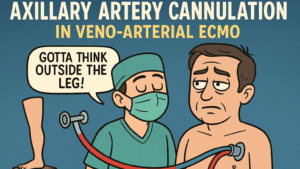This prospective, single-center study investigates methods to predict fluid responsiveness in patients on veno-venous extracorporeal membrane oxygenation (VV-ECMO) with acute respiratory distress syndrome (ARDS) in the prone position. Fluid responsiveness, essential in managing critically ill patients, determines the effectiveness of volume expansion to enhance cardiac output. However, over-administration of fluids can worsen ARDS by causing pulmonary edema. Traditional indicators like central venous pressure and inferior vena cava assessments are less reliable in this context due to VV-ECMO’s specific mechanical and positional requirements.
The research evaluates the diagnostic value of stroke volume index variation induced by the Trendelenburg position (ΔSVITrend), baseline carotid corrected flow time (FTcBaseline), and respirophasic variation in carotid artery blood flow peak velocity (ΔVpeakCA) in predicting fluid responsiveness. Conducted in a medical ICU, the study enrolled 51 VV-ECMO patients with ARDS in the prone position, measuring hemodynamic parameters via PiCCO catheterization and ultrasound imaging.
Fluid responsiveness was defined as a ≥15% increase in stroke volume index (SVI) after volume expansion. Of the patients studied, 64.7% were identified as fluid responders. ΔSVITrend showed the highest predictive accuracy with an AUC of 0.89, sensitivity of 82%, and specificity of 83%, followed closely by FTcBaseline (AUC: 0.87, sensitivity: 85%, specificity: 83%). These markers demonstrated superior reliability compared to conventional indicators like pulse pressure variation and stroke volume variation, which were less applicable due to low tidal volumes and the prone position.
The study highlights the feasibility and advantages of using carotid ultrasound for fluid responsiveness prediction. Unlike traditional methods, FTcBaseline and ΔVpeakCA are non-invasive, rapid, and applicable in patients under low tidal volume ventilation, making them ideal for VV-ECMO patients with ARDS. FTcBaseline is particularly advantageous as it does not require positional maneuvers or volume expansion, simplifying clinical workflows.
The Trendelenburg position, a “self-preload challenge,” emerged as a practical method for evaluating fluid responsiveness in the prone position. ΔSVITrend’s correlation with volume expansion-induced changes in SVI underscores its reliability. This approach mitigates risks associated with passive leg raising, such as catheter displacement, offering a safer alternative for VV-ECMO patients.
Limitations of the study include its focus on patients with low tidal volume ventilation, which may restrict generalizability to other populations, and the lack of comparison with fluid responsiveness tests in non-prone positions. Despite these constraints, the findings offer valuable insights for optimizing fluid management in critical care.
In conclusion, ΔSVITrend, FTcBaseline, and ΔVpeakCA provide accurate, non-invasive tools for predicting fluid responsiveness in VV-ECMO patients with ARDS in the prone position. These methods support tailored fluid management strategies, potentially improving outcomes in this high-risk population.







